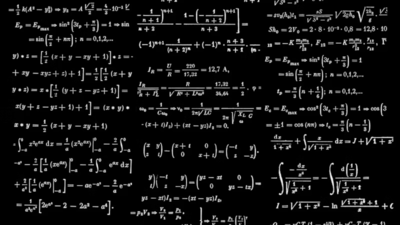ARTICLE AD BOX

Understanding how to convert between degrees and radians is one of the most crucial skills for anyone studying trigonometry, calculus, or advanced mathematics. Whether you're a GCSE student tackling your first trigonometry problems or an A-level student preparing for university, mastering this conversion will unlock a deeper understanding of mathematical concepts and make complex calculations significantly easier.
Why radians matter in mathematics
Before diving into conversion techniques, it's essential to understand why radians exist at all. While degrees are familiar and intuitive, after all, we've been using the 360-degree circle since ancient times, radians offer a more natural way to measure angles in higher mathematics.Radians are particularly important because they simplify many mathematical formulas. In calculus, for instance, the derivatives of trigonometric functions only work cleanly when angles are measured in radians.
This is why virtually all advanced mathematical work defaults to radian measure.
Degrees and radians: Understanding the fundamental concepts
Degrees represent the traditional way of measuring angles by dividing a complete circle into 360 equal parts. This system originated from ancient astronomy and remains popular because 360 has many divisors, making it convenient for practical applications.Radians, on the other hand, are based on the circle's radius. One radian is defined as the angle created when the arc length equals the radius of the circle.
This definition creates a direct relationship between the angle and the circle's geometry, making radians the natural choice for mathematical analysis.The key relationship to remember is that a complete circle equals 360 degrees or 2π radians. This fundamental equivalence forms the basis of all conversion calculations.
Degree and radian conversion formulas
Converting degrees to radians follows a straightforward formula derived from the basic relationship between degrees and radians.
Since 360 degrees equal 2π radians, we can establish that one degree equals π/180 radians.To convert degrees to radians: Multiply the degree measure by π/180To convert radians to degrees: Multiply the radian measure by 180/πThese formulas work because they're based on proportional relationships. When you multiply by π/180, you're essentially asking: "If 180 degrees equals π radians, what does this number of degrees equal in radians?"
Practical conversion examples
Let's work through some common conversions that appear frequently in examinations and real-world applications.Converting 90 degrees to radians demonstrates the process clearly: 90 × π/180 = π/2 radians. This result makes sense geometrically; 90 degrees is a quarter of a full rotation, and π/2 is indeed a quarter of 2π.Similarly, converting 45 degrees gives us: 45 × π/180 = π/4 radians. Again, this represents one-eighth of a full rotation, which matches our expectation.For the reverse process, converting π/3 radians to degrees: π/3 × 180/π = 60 degrees.
The π terms cancel out, leaving us with a clean result.
Angle conversions to memorise
Certain angle conversions appear so frequently that memorising them will save considerable time during examinations and problem-solving. These standard angles form the backbone of trigonometric work:
- 0 degrees = 0 radians
- 30 degrees = π/6 radians
- 45 degrees = π/4 radians
- 60 degrees = π/3 radians
- 90 degrees = π/2 radians
- 180 degrees = π radians
- 270 degrees = 3π/2 radians
- 360 degrees = 2π radians
Learning these conversions by heart eliminates the need for calculation in many situations and helps develop an intuitive feel for radian measure.
Developing conversion fluency
Becoming fluent with conversions requires consistent practice and visual understanding.
Creating a unit circle diagram with both degree and radian measures helps cement these relationships in memory. Mark the standard angles around the circle, noting how the radian measures relate to fractions of π.Regular practice with conversion problems builds speed and accuracy. Start with the standard angles, then progress to more complex values. The goal is to develop automatic recall for common conversions whilst maintaining confidence with the formulas for unusual angles.
Common pitfalls and how to avoid them
Many students make errors when working with radians, often because they forget to switch their calculator to radian mode. Most calculators default to degree mode, which can lead to incorrect results when evaluating trigonometric functions with radian inputs.Another frequent mistake involves mixing units within a single problem. Always check whether a problem expects answers in degrees or radians, and ensure all your working uses consistent units throughout.When memorising standard angles, focus on understanding the patterns rather than rote learning. Notice how 30-60-90 triangles and 45-45-90 triangles generate the most common radian measures.
Once you've mastered basic conversions, the real power becomes apparent when solving trigonometric equations and evaluating functions. Working with expressions like sin(π/2) or cos(π) becomes natural when you understand these represent familiar angles.



.png)
.png)
.png)
















 2 hours ago
4
2 hours ago
4









 English (US) ·
English (US) ·